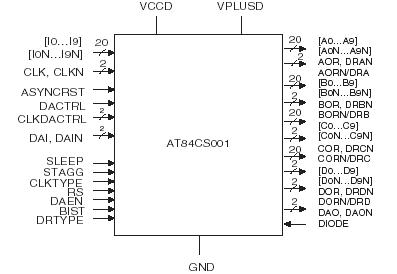AT84CS001: Features: •High-speed ADC Family Companion Chip •Selectable 1:2 or 1:4 DMUX Ratio•Power Consumption: 2.6W •LVDS Compatible Differential Data and Clock Inputs (100Ω Term...
floor Price/Ceiling Price
- Part Number:
- AT84CS001
- Supply Ability:
- 5000
Price Break
- Qty
- 1~5000
- Unit Price
- Negotiable
- Processing time
- 15 Days
SeekIC Buyer Protection PLUS - newly updated for 2013!
- Escrow Protection.
- Guaranteed refunds.
- Secure payments.
- Learn more >>
Month Sales
268 Transactions
Payment Methods
All payment methods are secure and covered by SeekIC Buyer Protection PLUS.

 AT84CS001 Data Sheet
AT84CS001 Data Sheet







